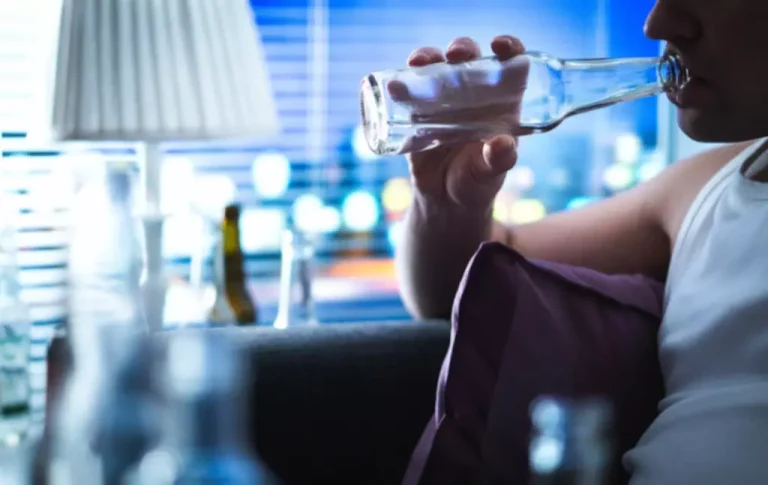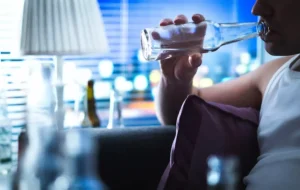
According to a National Survey in Drug Use and Health published in 2021, over 25 million people aged 12 and above used benzodiazepines as prescribed. Not everyone can put their life on pause for inpatient treatment, and that’s where outpatient options come in. It’s like the difference between going to summer camp and taking summer classes – you still get the benefit, but with the flexibility to maintain your regular life. A pattern of psychoactive substance use that is causing damage to the mental or physical health of the user. By clicking “Submit,” you certify that you have provided your legal name and phone number, agree to the terms and conditions and privacy policy, and authorise Paid Advertiser to contact you.
Health News

In pediatric patients, benzodiazepines are sometimes prescribed for severe anxiety, seizures, or to manage muscle spasms. However, the risks of sedation, respiratory depression, and developmental impact must be carefully considered. Long-term or frequent use in children is generally avoided due to the potential for dependence, tolerance, and adverse effects on cognitive development. The action of benzodiazepines results in the suppression of overactive neural circuits, which is why they are commonly prescribed for conditions like anxiety disorders, insomnia, epilepsy, and muscle spasms. These effects occur rapidly, making benzodiazepines effective for acute symptom relief.
Therapy and Counseling

Prescribing interventions, substitution, psychotherapies and pharmacotherapies all contribute to the management of benzodiazepine dependence. There is therefore a need to develop a better evidence base and treatment paradigm for these patients. Unless the patient is elderly, it is helpful to switch to a long-acting benzodiazepine in both withdrawal and maintenance therapy. Urine tests, the most common method, detect benzodiazepines for up to 3–7 days after use for short-acting types and up to 30 days for long-acting ones, according to the Substance Abuse and Mental Health Services Administration (SAMHSA). Blood tests are more precise but have a shorter detection window of 24 hours to drug addiction a few days. Hair follicle tests detect benzodiazepines for up to 90 days, offering the longest detection period.
- Both substances are central nervous system depressants, and their combined effects are dangerously synergistic.
- Some benzodiazepines are also administered rectally (as suppositories) for rapid absorption in emergencies.
- The antiepileptic oxcarbazepine has also shown potential to ameliorate withdrawal symptoms more than older-generation antiepileptics such as carbamazepine 71.
- This substance misuse can strain relationships with family, friends, and romantic partners.
- Physical symptoms can include dizziness, blurred vision, and a general feeling of being about as coordinated as a newborn giraffe on roller skates.
- AddictionResource aims to present the most accurate, trustworthy, and up-to-date medical content to our readers.
- Alprazolam is widely used as monotherapy for panic disorder and anxiety and was found superior to other forms of monotherapy for these conditions including other BZD, non-SSRI antidepressants, and buspirone.
Recovery starts here.
- The societal impact of benzo addiction extends beyond individual health, contributing to strained healthcare resources, disrupted family dynamics, and a rise in prescription drug misuse.
- Signs of Halcion addiction may include increased tolerance, withdrawal symptoms, and cravings for the drug.
- The calming effects that make these drugs effective in the short term can quickly become dangerous, leading to misuse and addiction that is challenging to overcome.
- Common benzodiazepines include diazepam (Valium), alprazolam (Xanax), and lorazepam (Ativan); street names for these drugs include “benzos,” “tranks,” or “downers” due to their sedative effects.
- It’s important to manage these symptoms under medical supervision to ensure safety and comfort during detoxification.
- This part of the nervous system controls unconscious processes such as breathing, heartbeat and digestion.
Withdrawal from prescription drugs doesn’t always end when the these symptoms subside. Post-acute withdrawal syndrome (PAWS) is a collection of related symptoms, including mood swings, sleep disturbances and intense cravings that can persist for weeks or even months. Treating a diazepam overdose involves supportive care and, in some cases, the administration of flumazenil, a benzodiazepine antagonist that can reverse the effects of the overdose. However, flumazenil should be used with caution, as it can precipitate seizures in individuals who have been taking benzodiazepines for an extended period. A unique toxidrome related to parenteral formulations of diazepam and lorazepam is propylene glycol poisoning. Yes, benzodiazepines are legal for medical use when prescribed by a licensed healthcare provider.
This includes visual orienting (slowly looking around your space), biting into a lemon, and certain kinds of breathing. This part of the nervous system controls unconscious processes such as breathing, heartbeat and digestion. It’s also in charge of keeping us safe through the body’s fight, flight, fawn and freeze responses.
How can one prevent diazepam overdose?
BZDs are a class of psychoactive drugs known for their depressant effect on the central nervous system (CNS). They quickly diffuse through the blood–brain barrier to affect the inhibitory neurotransmitter GABA and exert sedative effects. Related to their rapid onset and immediate symptom relief, BZDs are used benzodiazepine withdrawal for those struggling with sleep, anxiety, spasticity due to CNS pathology, muscle relaxation, and epilepsy. The dependence on BZDs generally leads to withdrawal symptoms, requiring careful tapering of the medication when prescribed. Regular use of BZDs has been shown to cause severe, harmful psychological and physical dependence, leading to withdrawal symptoms similar to that of alcohol withdrawal.
Addictions
Chronic use of benzodiazepines leads to physical dependence, marked by withdrawal symptoms like anxiety, irritability, and sleep disturbances upon abrupt cessation. Psychological dependence, characterized by cravings and compulsive use, also develops within a similar timeframe. Health professionals recommend limiting benzodiazepine use to short-term periods (two to four weeks) to minimize the risk of dependence. For those who have developed dependence, a gradual tapering process under medical supervision is necessary to mitigate withdrawal symptoms and safely discontinue use.

Medical professional hub

Chronic use of BZD leads to a small but significant change in fluid intelligence, while long-term use of BZD correlates with worse cognitive decline when compared to the effects of using a high dosage 21. Addiction Resource is an educational platform for sharing and disseminating information about addiction and substance abuse recovery centers. Addiction Resource is not a healthcare provider, nor does it claim to offer sound medical advice to anyone. Addiction Resource does not favor or support any specific recovery center, nor do we claim to ensure the quality, validity, or effectiveness of any particular treatment center. No one should assume the information provided on Addiction Resource as authoritative and should always defer to the advice and care provided by a medical doctor. Benzodiazepine dependence differs from addiction primarily in its characteristics and behavioral outcomes.
